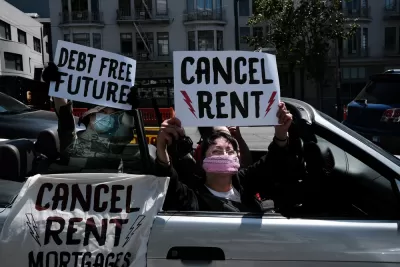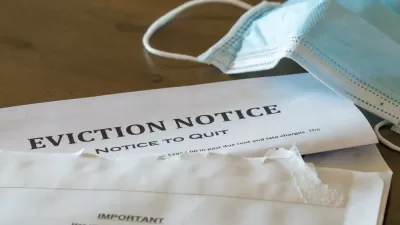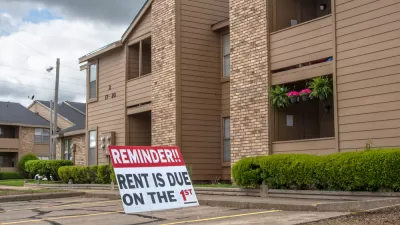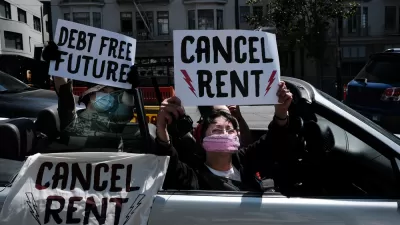The effects of the pandemic economic shutdown on the rental market have been far lower than feared—at least at aggregate, not individual, levels. Is an eviction moratorium the most helpful tool at this point in the pandemic?

An article by Michael Hendrix suggests that the likelihood of an "eviction tsunami" is low, and that the federal government's eviction moratorium, ordered by the Centers for Disease Control and Prevention (CDC) and extended by the Biden administration until the end of July, actually did very little to stem evictions during the past year and a half.
The ineffectiveness of the CDC's eviction moratorium, however, might suggest that the rental market is not on the verge of a complete meltdown, as many advocates (and this author) have worried since the outset of the pandemic.
"The market and generous government aid seem to have done far more to avert an eviction crisis than the various moratoria on the books," writes Hendrix. Meanwhile the economic ice of the pandemic is thawing. "Renters are more confident in their housing security than even a few months ago, according to a new analysis by Zillow, and in contrast to the unmet fear of 30 to 40 million evictions last year, the number at risk of eviction today is closer to 2.7 million."
Though renters of color suffered disproportionate impacts in the pandemic rental market, "this is a case for financial aid more than for a blunt, crisis-induced eviction moratorium," writes Hendrix. "Helping renters receive financial aid and get better terms from property owners would do far more to avert painful evictions."
FULL STORY: Do We Really Need a Moratorium on Evictions?

Alabama: Trump Terminates Settlements for Black Communities Harmed By Raw Sewage
Trump deemed the landmark civil rights agreement “illegal DEI and environmental justice policy.”

Planetizen Federal Action Tracker
A weekly monitor of how Trump’s orders and actions are impacting planners and planning in America.

The 120 Year Old Tiny Home Villages That Sheltered San Francisco’s Earthquake Refugees
More than a century ago, San Francisco mobilized to house thousands of residents displaced by the 1906 earthquake. Could their strategy offer a model for the present?

In Both Crashes and Crime, Public Transportation is Far Safer than Driving
Contrary to popular assumptions, public transportation has far lower crash and crime rates than automobile travel. For safer communities, improve and encourage transit travel.

Report: Zoning Reforms Should Complement Nashville’s Ambitious Transit Plan
Without reform, restrictive zoning codes will limit the impact of the city’s planned transit expansion and could exclude some of the residents who depend on transit the most.

Judge Orders Release of Frozen IRA, IIJA Funding
The decision is a victory for environmental groups who charged that freezing funds for critical infrastructure and disaster response programs caused “real and irreparable harm” to communities.
Urban Design for Planners 1: Software Tools
This six-course series explores essential urban design concepts using open source software and equips planners with the tools they need to participate fully in the urban design process.
Planning for Universal Design
Learn the tools for implementing Universal Design in planning regulations.
Clanton & Associates, Inc.
Jessamine County Fiscal Court
Institute for Housing and Urban Development Studies (IHS)
City of Grandview
Harvard GSD Executive Education
Toledo-Lucas County Plan Commissions
Salt Lake City
NYU Wagner Graduate School of Public Service





























